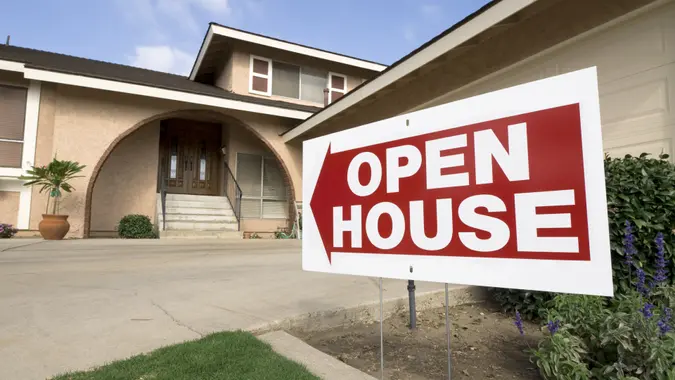Real Estate: 4 Uninsurable Money Traps to Avoid when Buying Your Next House

Commitment to Our Readers
GOBankingRates' editorial team is committed to bringing you unbiased reviews and information. We use data-driven methodologies to evaluate financial products and services - our reviews and ratings are not influenced by advertisers. You can read more about our editorial guidelines and our products and services review methodology.

20 Years
Helping You Live Richer

Reviewed
by Experts

Trusted by
Millions of Readers
Homebuyers have been facing a very difficult housing market lately. Inflation, soaring mortgage rates and low inventory have left many would-be homebuyers on the sidelines.
So, on top of this, experts say that if you’re buying a home, make sure you avoid buying a house that will cost a lot to insure. Here are some of these traps you should look out for:
Inspections Are Key to Lower Home Insurance Costs
According to Cronin Insurance Agency, several inspections can save you from being caught in a high insurance trap.
These include a survey inspection, an appraisal inspection and a home inspection.
Yet, according to Cronin Insurance, you will need a few other inspections to understand and assess your insurance costs.
Wind Mitigation Inspection Report
This inspection will check how hurricane-proof the home is. As Cronin Insurance noted, it also discounts your home insurance premium.
A 4-Point Inspection
A 4-point inspection checks the home’s roofing, plumbing, AC/heating, and electrical systems.
“If your 4-point inspection reveals a discrepancy, you will need to remedy it before the insurance company will let you bind the coverage. You remedy it by producing a paid receipt from a contractor that states the exact repair mentioned on the 4 points,” according to Cronin Insurance.
Loss Report
Experts also recommend requesting a loss report or run on your potential new home.
Stuart Bensusan, director at Surewise, said that from a home insurance company’s perspective, he sees customers too often on the other side of this dilemma, having already fallen into the trap of buying a home that turns into an insurance nightmare.
“Asking for a loss report on your potential new home is one great way to check the history of the property you are considering buying,” said Bensusan.
As he explained, many uninsurable homes will have had issues in the past – from leaking roofs to unstable pipes causing flooding – and a loss report will highlight any claims prior owners have made in the past.
“It’s important to investigate any past claims that arise from this – do they indicate an underlying structural condition in your home that could crop up again?” he said.
In addition, he said that if the home you have been looking at has been remodeled, you’ll want to seek out the paperwork accompanying this project.
“While many renovations can substantially raise the value of a home if they were conducted improperly, the house may become hazardous,” he said. “Any insurance company will require proof that previous renovations adhere to building requirements and have not put any wiring or plumbing of the property at risk – so do your own checks before buying.”
More From GOBankingRates
 Written by
Written by  Edited by
Edited by 

























